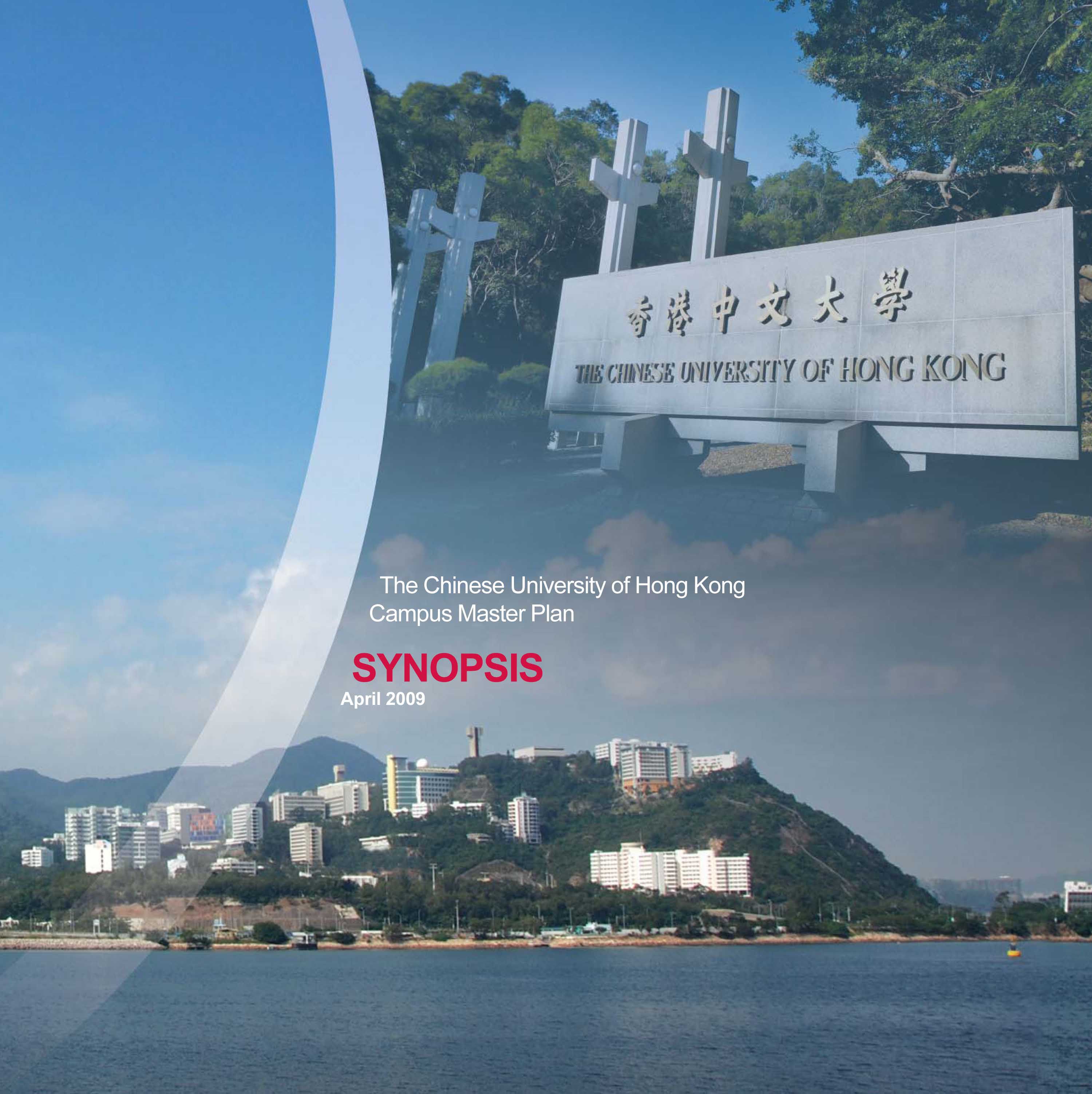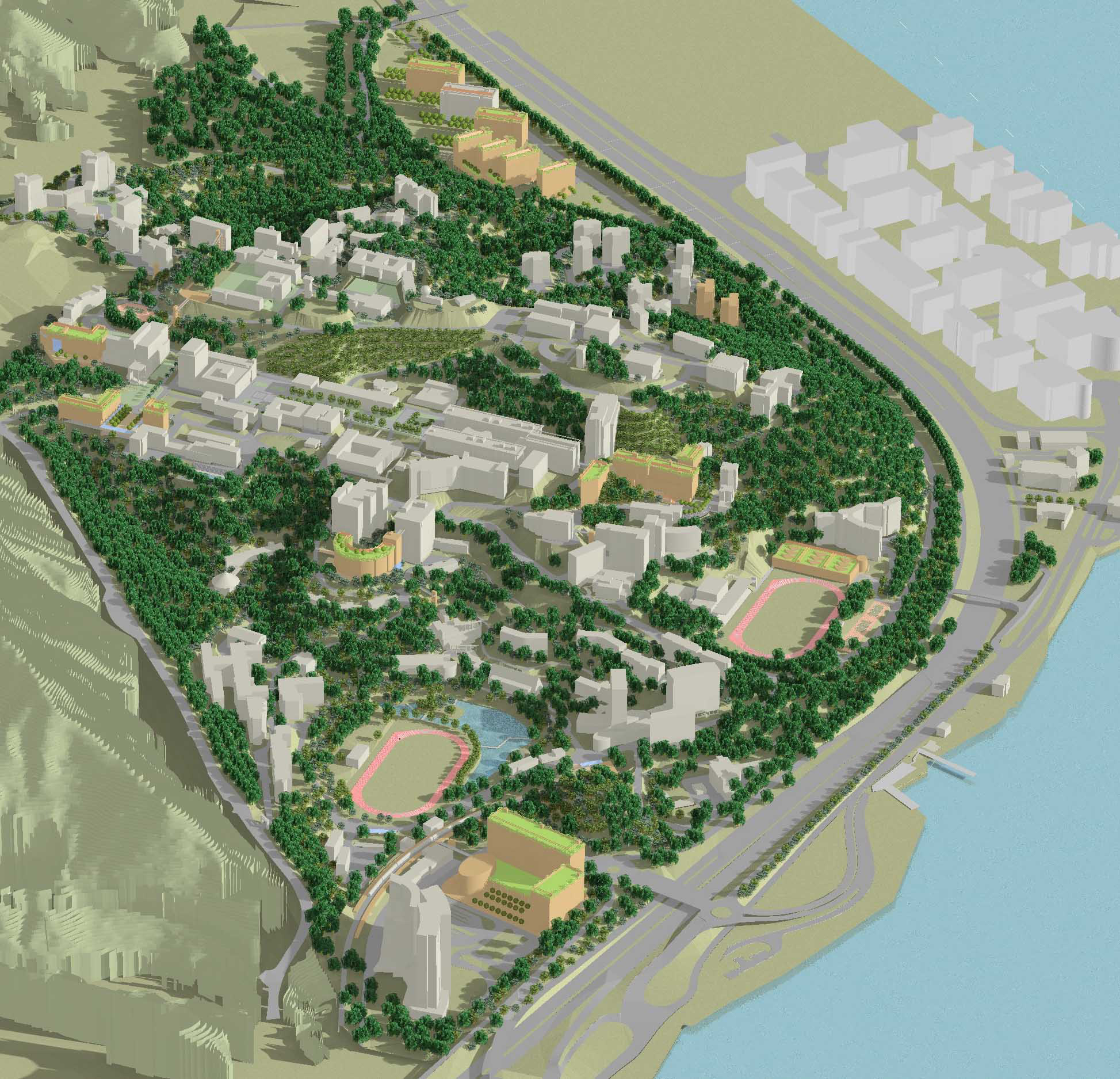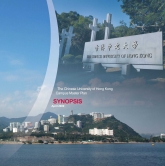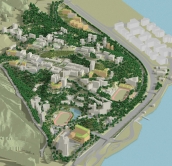CUHK
News Centre
CUHK Council Endorses Campus Master PlanCharting a Sustainable Future for CUHK Campus
The master planning of The Chinese University of Hong Kong (CUHK) campus took a major step forward as the Council of CUHK received the Campus Master Plan (CMP) Synoptic Report, reaffirmed the vision of the Master Plan, and endorsed the Master Plan as a long-term development roadmap for the University campus. Taking into consideration the teaching, learning and research needs of the University, the Master Plan maps out a sustainable and visionary blueprint for the development of the University campus in the years up to 2021 and beyond, setting the stage for the University to grow as a world-class institution enjoying both academic excellence and campus sustainability. The Master Plan sets out the vision of campus development for reference by planners and architects engaged in implementing the Plan in future, and is expected to be a living document that evolves with changing circumstances and needs.
Six Precepts Confirmed after Extensive Consultation
The planning process, begun a year ago, was conducted through different stages of engagement and consultation with groups cutting across the entire University community. Over 40 stakeholder engagement activities were held, including briefing sessions, engagement meetings, workshops, forums, online surveys, exhibitions and guided tours, yielding 1,100 items of feedback. From such inputs, the consultant distilled six planning precepts which have since attracted broad support from the University community. These precepts are:
(1) planning and design of places for education and research activities;
(2) enhancing college life;
(3) promoting a pedestrian-friendly campus;
(4) conserving places of value;
(5) creating a landscape of vital importance; and
(6) making a sustainable campus.
A Balanced Approach to Sustainable Development
While catering for the increasing needs for teaching and research, the Master Plan gives the highest priority to preserving and enhancing the lush and green campus. It has recommended guidelines for a model of sustainable campus, aiming at a 25% cut in energy use (per capita) and a 20% cut in greenhouse gases (GHG) emissions (per capita) by 2025, with a view to developing a campus with cleaner air, better energy efficiency performance, less waste and less reliance on motor vehicles. It calls for further enhancements in environmental management in areas ranging from building design methods and materials, energy and water conservation, to transport management.
The Master Plan recommends a comprehensive transport framework that will give priority to pedestrians over motor vehicles. The framework will seek to optimize the performance of transport facilities including the pedestrian network, internal road enhancements and management, a park-and-ride system, cycle tracks and shuttle bus services.
The Plan also recommends that the University should maintain and continue to develop a green and pastoral landscape, and proposes a methodology to identify, assess and list all places with unique values that should be conserved on campus.
Zones for Faculty Clusters and Sites for New Colleges Identified
A central proposal of the Master Plan is to develop clustered and zoned development for disciplinary teaching and research activities, in order to enhance the efficient use of resources, to provide for convenient access, and to optimize land use for social and academic interactions. Under the Plan, the eight Faculties will be clustered into three zones across the campus, while research activities will be clustered in the campus north and east. Following the Government’s grant of a parcel of land Area 39, the University will develop the area in phases into a substantial research hub with postgraduate hostels. The Master Plan has also identified potential development sites for academic, research and recreational facilities, having regard to the geological features, ecological characteristics and cultural value of these sites.
Sites for the new Colleges are proposed. In line with the University’s vision to further enhance college life, these sites are near the existing Colleges as well as close to the central campus, to form distinct college neighbourhoods to strengthen the college system, enable communication among Colleges, and enhance pedestrian connections between the Colleges and central campus.
Concerted Efforts See Fruition
The Report has taken into account the diverse views collected. It is the result of the close collaboration between the consultant team comprising Aedas Limited, Edward Cullinan Architects (UK), and the University community. It has also been made possible by the hard work of the Steering Committee on CMP, which is co-chaired by Professor P.C. Ching, Pro-Vice-Chancellor and Professor Essy Baniassad, Research Professor of Architecture, and the multi-disciplinary professional team of planning, engineering, transportation and landscape consultants.
The Master Plan has put forth recommendations and implementation strategies, including the setting up of a steering group to ensure that the Master Plan will be updated periodically so as to remain relevant and appropriate in relation to any future development on campus and that all new development proposals should be assessed against the six planning precepts. These guidelines will enable CUHK to plan and execute its future campus development efforts to achieve sustainability.
The Synoptic Report of the CMP is available at www.cuhk.edu.hk/cmp.







